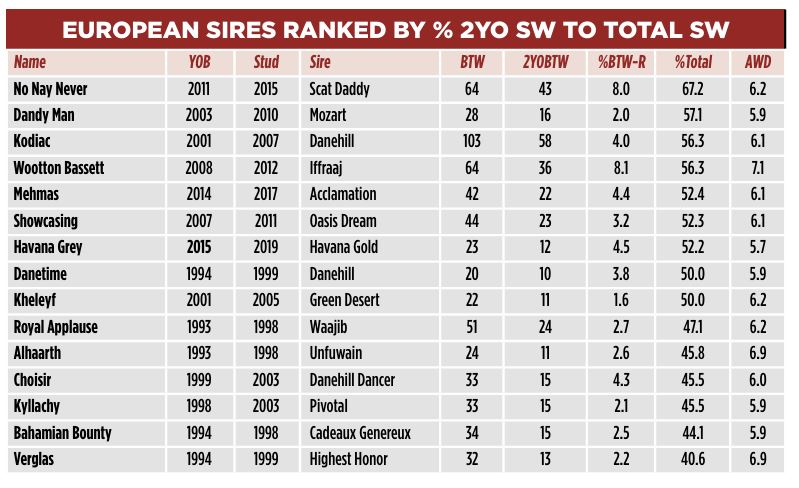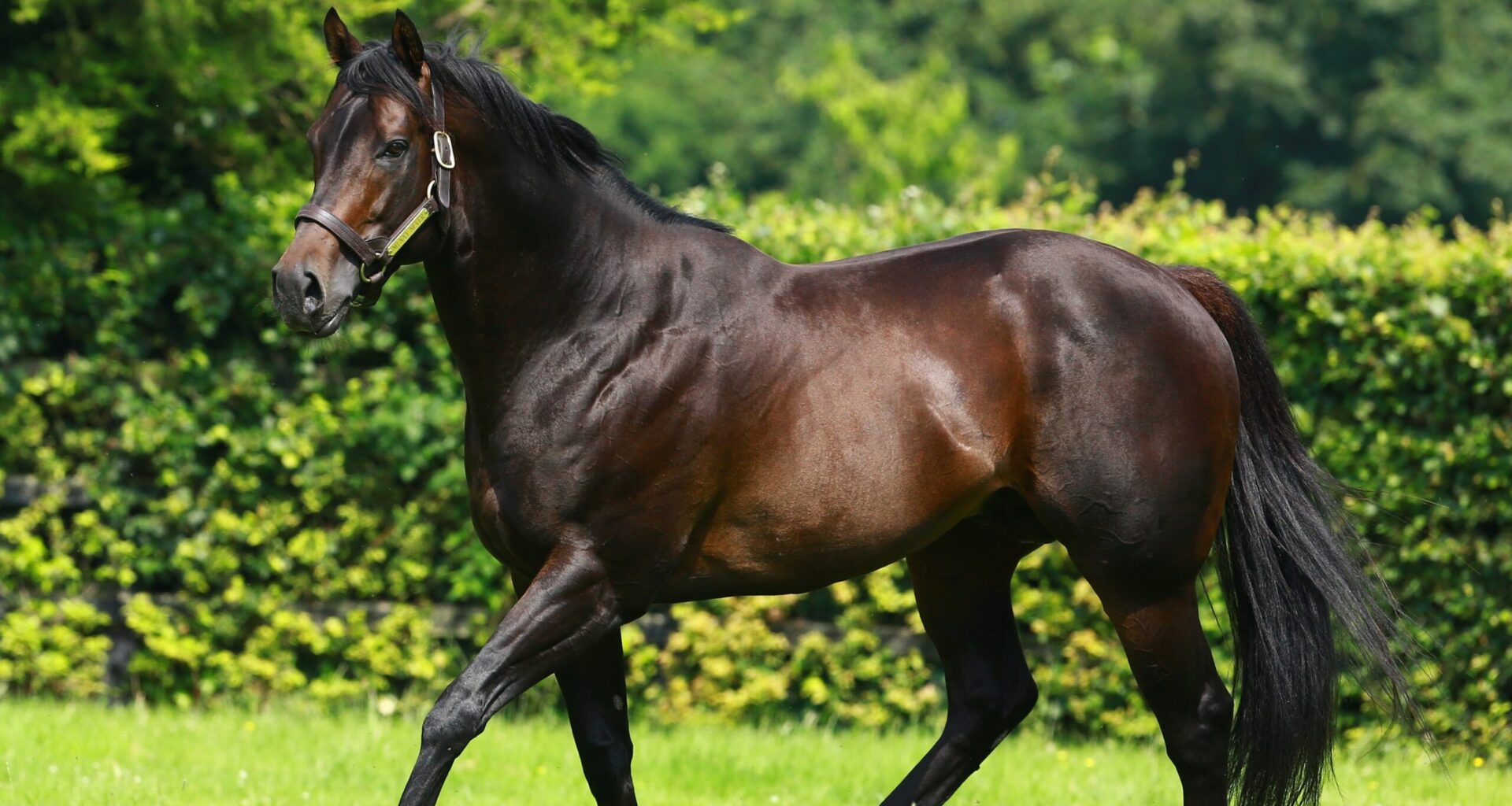For all its faults, European racing is still among the most diverse when it comes to providing a full programme of opportunities for all types of horses. You may argue that Japan is the shining example of how to produce brilliant middle-distance horses, while Australia has majored on speed and precocity, but Europe still creates the most coherent and compelling inter-generational narrative each year. We can also see this diversity in aptitude played out through the stallions employed to provide top racehorses for the European programme.
By way of illustration, it is not hard to imagine a Wootton Bassett taking on a Sea The Stars in an all-age Group 1. But these two stallions are polar opposites when we look at their progeny aptitude. For instance, only five per cent of Sea The Stars’ stakes winners earned their stakes winner stripes at two, while 56% of Wootton Bassett’s stakes winners opened their account as juveniles. To qualify as a strong influence for precocity, a pass-mark of four in every ten juvenile stakes winners is plenty, so I thought it might be instructive to run the rule over some of our better stallions.
Royal Ascot served as a reminder of how prolific No Nay Never has become as a source of both speed and precocity. Norfolk Stakes winner Charles Darwin and Queen Mary Stakes scorer True Love are archetypal No Nay Nevers. Since he’s been around, no other sire in Europe can match his tally of juvenile Group/stakes winners over five and six furlongs. It is therefore unsurprising to see No Nay Never sitting on top of our log, which ranks major sires with 20 or more stakes winners by the percentage who achieved that status at two. His score of 67.2% is ten clear of Kodiac, the current title holder in terms of five and six-furlong stakes winners (39) and joint leader with No Nay Never on 18 Group winners. No Nay Never’s strike-rate of 8.1% stakes winners from runners makes it inevitable that he will soon overtake Kodiac, who has an eight-year head start.
What No Nay Never and Kodiac have in common among all their juveniles is an almost identical average winning distance of 6.1 and 6.2 furlongs respectively. Contrast this to the 7.1 furlongs posted by Wootton Bassett. Nothing strange in that, but when you know that Wootton Bassett produces two-year-old stakes winners at a rate of 56% among all his stakes winners, it makes the son of Iffraaj a rarity.
All the top staying sires of the day typically have a juvenile stamina index of seven furlongs or more, including Galileo (7.7), Dubawi (7.4) and Frankel (7.5). But none are as prolific as Wootton Bassett at siring stakes-winning youngsters. Of the big three, Frankel is the least likely to do so with 18% stakes-winning juveniles while Dubawi and Galileo return figures of 19.4% and 22.1% respectively. Even speedier sires like Kingman who, like Wootton Bassett has a stamina index of 7.1 furlongs for his two-year-olds, can only claim 22.3% juvenile stakes winners.
Looking further back in time, we have Sadler’s Wells on 15.9% juvenile stakes winners and a stamina index of 7.8 furlongs, so we can conclude that sires of quality staying two-year-olds do not usually have such a high proportion of juvenile stakes inners among all their black-type winners – certainly not to the degree Wootton Bassett has.
Returning to those with a high proportion of juvenile stakes winners among their total, we have three more with north of 50 per cent scores headed by Mehmas with 52.4%. The Tally-Ho sire,
whose youngsters have a stamina index of 6.1, has emerged as serious competition for No Nay Never when it comes to siring top-quality five and six-furlong youngsters.
Unlike No Nay Never, Mehmas is still waiting for his first Royal Ascot winner but he has already amassed 20 stakes winners and eight Group winners in this speed category, which compares favourably with No Nay Never’s 20 stakes winners and 11 Group winners at the same stage of his career. Looking at Mehmas’ stakes-winning youngsters, he has 22 so far, including 14 at Group level. At the same point No Nay Never had posted 27 stakes winners, with 15 at Group level.
Showcasing and Havana Grey are two other active sires with higher than 50% juvenile black-type winners and neither is surprising. Havana Grey, who is having a quieter time than usual before the first of his well-bred crops runs next year, easily has the lowest two-year-old stamina index (5.7 furlongs) of any sire with such a high concentration of juvenile stakes winners.
Finally, just to dispel the notion that such high concentrations of two-year-old stakes winners is a recent phenomenon, we can put forward three sons of the famous speed influence Sing Sing, all of whose careers took place following the birth of the Pattern in 1971.
Sing Sing was Timeform’s top-rated juvenile on 134 after winning the National Produce Stakes and Cornwallis Stakes in an unbeaten six-race season. His sons Song, African Sky and Mummy’s Pet were all successful at passing on that speed, particularly through their two-year-olds. Although crop sizes were tiny back then compared to today, 60% of Song’s stakes winners were juvenile black-type winners. By comparison, African Sky returned a figure of 57.5% while Mummy’s Pet produced 53.1%
More recently, we have had Royal Applause (47.1%) and Bahamian Bounty (44.1 %). Even the great Habitat was on the 40% mark and he sired seven Group 1- winning two-year-olds, including Marwell and Sigy, among his career total of 84 stakes winners.

